SRM-AP All News
ALL News
- Highly-stable amine-free CsPbBr3 PNCs for display applications September 22, 2022

The Department of Chemistry is glad to announce that Dr Nimai Mishra, Assistant Professor, along with his research group comprising PhD scholars, Syed Akhil, Manoj Palabathuni, Subarna Biswas, Rahul Singh, have published an article titled Highly-Stable Amine-Free CsPbBr3 Perovskite Nanocrystals for Perovskite-Based Display Applications in the journal ACS Applied Nano Materials published by the American Chemical Society, having an impact factor of 6.14.
Colloidally synthesised cesium lead halide (CsPbX3; X=Cl, Br, and I) perovskite nanocrystals (PNCs) often suffer from poor ambient and environmental stability conditions, limiting their practical applications. The commonly used surfactant oleylamine is converted to oleylammonium cation, which pulls out the halide anion from the PNCs surface, thus disrupting the nanocrystal’s structural integrity and stability.
The research group has developed a simple, completely amine-free colloidal synthesis with a hot injection method in open-atmospheric conditions and introduced bromooctane as a bromine precursor to overcome the above issues. These, as synthesized amine-free PNCs, showed a photoluminescence quantum yield (PLQY) of around 60 %, and the size of PNCs is ~25 nm. Moreover, these amine-free PNCs were highly stable in the colloidal solution and thin films for more than five months in ambient conditions, with 66% of its initial PLQY.
In addition, these PNCs have shown exceptional stability under different environmental conditions, with 44 % of initial PL even after 6 hours of water treatment and 28 % of initial PL under ethanol treatment for 120 minutes. Furthermore, it has exhibited excellent photostability for 96 hours and retained 36 % of its initial PL under ceaseless UV light irradiation at 365 nm (8 W/cm2). Additionally, these PNCs have good stability upon heat treatment and maintained 34 % of initial PL upon heating up to 90 ºC.
The research team has also successfully fabricated the green-emitting down-conversion LED using these amine-free PNCs. Thus, they visualize that these amine-free CsPbBr3 PNCs are perhaps the ideal candidates for perovskite-based display applications.
Continue reading →
- Molecular design to store solar energy September 22, 2022
 India has an ambitious target of achieving 300 GW of solar power by 2030. Conventional methods for producing solar power involve absorbing sunlight by a molecule and converting it directly into electricity. This is possible only during the daytime when sunlight is available. An interesting and complementary prospect is storing the absorbed solar energy by converting it into a different form of energy, such as chemical energy, which can then be transformed into electrical energy when sunlight is not available during the night-time.
India has an ambitious target of achieving 300 GW of solar power by 2030. Conventional methods for producing solar power involve absorbing sunlight by a molecule and converting it directly into electricity. This is possible only during the daytime when sunlight is available. An interesting and complementary prospect is storing the absorbed solar energy by converting it into a different form of energy, such as chemical energy, which can then be transformed into electrical energy when sunlight is not available during the night-time.To realise this prospect, Assistant Professor Dr Baswanth Oruganti from the Department of Chemistry has designed a molecule that can absorb solar energy and convert it into the chemical energy of the bonds. His paper titled Modulating the Photocyclization Reactivity of Diarylethenes through Changes in the Excited-State Aromaticity of the π-Linker has been published in the Journal of Organic Chemistry, on Cover Page, with an impact factor of 4.2. He is both the first author as well as the corresponding author of the article. For this project, he has collaborated with Prof Bo Durbeej, Division of Theoretical Chemistry, Department of Physics, Chemistry, and Biology (IFM), Linköping University, Sweden.
Abstract
In recent years, the concept of excited-state aromaticity and its applications in photophysics and photochemistry has attracted considerable research interest. Our study uses quantum chemical calculations to systematically investigate if the photocyclization reactivity of diarylethene switches can be controlled by the excited-state aromaticity of the ethene bridge. Indeed, we demonstrate that these switches can be transformed from being highly reactive to completely non-reactive by changing the excited-state character of the bridge from anti-aromatic to aromatic.
Generally, molecules tend to move from a high-energy state to a low-energy state, as the lowering of energy increases the stability of the molecule and makes it chemically less reactive. In contrast, the present study shows that it is possible to chemically transform a molecule from a low-energy (aromatic) state to a high-energy (non-aromatic) state by absorption of light. This reaction occurs via a high-energy (anti-aromatic) electronically excited state of the molecule induced by light and has potential applications for storing solar energy in the form of chemical energy.
One challenge in the design of molecular solar energy storage systems, such as the diarylbenzene designed in the study, is that it is difficult to store solar energy for a longer period due to the instability of the newly formed chemical bonds at room temperature. To store solar energy for a longer period, one needs to compromise on the amount of energy stored in the bonds. In this regard, in the future, researchers are planning to optimise their molecular design by finding the right balance between the amount of solar energy stored and the time period for which it can be stored.
Continue reading → - Presented paper at the East Asian Economic Association Convention September 21, 2022
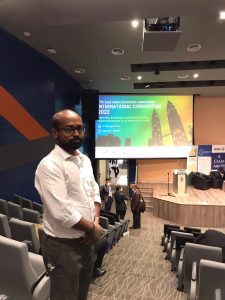
Dr J Vineesh Prakash, Assistant Professor, Department of Economics, presented a paper at the 17th East Asian Economic Association (EAEA) convention that was held on August 27-28, 2022 at Sunway University, Kuala Lumpur, Malaysia.The theme of the convention was “Growth, Resilience and Sustainability: Asian Dynamism in an Uncertain World”.
The East Asian Economic Association (EAEA) was founded in 1987 as the first international academic organisation devoted to East Asian economics. The international convention is its annual conference where papers for publication in the Asian Economic Journal are discussed.
Dr Vineesh presented the paper titled Does Business Group Affiliation Enhance Firm-Level Profitability? Evidence from Indian Automotive Component Industry, that addresses the growing competitive and volatile nature of economic sphere by testing the persistence of profit in a highly evolving emerging country environment such as India.
Emerging economies, such as India, confront different challenges than developed economies. The country has witnessed diverse regulatory environments, varying from highly regulated to more liberal ones. The more liberal environment coupled with the entry of overseas players into this realm has a definite impact on the existing industrial structure, thereby creating a volatile, ever evolving competitive environment.
The paper aims to address this issue and seeks to validate the part played by RBV in generating inimitable capabilities in a context-specific setting of a particular industry, i.e., the Indian automotive component industry. It also analyses the part played by business group affiliation in the post-reform era and its influence on profitability.
The paper found that profitability has moderate-to-high persistence and the variables, such as business group firms with overseas investments, export intensity, firm size, labour productivity growth, and past R&D intensity, have a contributory role in enhancing a firm’s profitability. Other variables such as business group affiliation, firm’s age, firm’s leverage, capital intensity, and A&M intensity have found to exercise a detrimental impact on the firm’s profitability.
Social implications of the research
The results, as reported in this paper, have some important implications for different stakeholders like managers, regulators, policymakers, etc. The finding that past R&D intensity has a positive influence on current profitability is significant to managers so they can allocate appropriate resources to fund such projects without many apprehensions.
The proof that labour productivity growth and profitability are positively related implies that managers could further focus on various in-house skill development programs to enhance labour productivity.
The finding of a positive influence of exports on profitability indicates that managers could further explore the external markets to boost up profitability as export markets are reportedly far more rewarding.
The discovery of moderate to high profit persistence has an important implication for regulators in order to facilitate healthier competition among firms. The moderate to high profitability persistence implies that the regulators have not managed to instill a reasonable level of competition in the industry through carefully crafted interventions, thereby facilitating its growth.
Continue reading → - Edala Naveen climbing the success ladder September 20, 2022
 The moment he got the placement offer was surreal for Edala Naveen from the Department of Computer Science Engineering. Naveen was incredibly pleased with the opportunity. He has been placed at Crossover with an exciting offer of 44.91 LPA. He will be working at the company as an innovator to handle multiple technology stacks and develop projects and research work for use across the group of companies. He believes that his role in the company itself beckons interesting challenges and that he is in a well-poised position to make maximum use of it.
The moment he got the placement offer was surreal for Edala Naveen from the Department of Computer Science Engineering. Naveen was incredibly pleased with the opportunity. He has been placed at Crossover with an exciting offer of 44.91 LPA. He will be working at the company as an innovator to handle multiple technology stacks and develop projects and research work for use across the group of companies. He believes that his role in the company itself beckons interesting challenges and that he is in a well-poised position to make maximum use of it.The training he received from the university has largely been from the ISCP and ISES subjects. These subjects are beneficial in preparing for GRE and IELTS and thus helped him clear the assessments for the placement. He secured high scores for CSAT and GRE and aced IELTS with a score of 8.5 in 9. He could also crack the coding tests with the knowledge he earned from the ISCP classes at the university.
Naveen was in awe of the Next Tech Lab of the university, which was a robust support system for him throughout the process. “Not only did the student-run nature of the lab help me have a safe environment to fail faster, but it also helped me to maintain the sense of autonomy that ultimately provided me with the confidence to attempt and clear the role’s requirements,” he said.
He was impressed with the personnel and staff who had helped him by availing resources and knowledge when he reached out to them. The constant assistance from the Directorate of Corporate Relations and Career Services was a valuable addition to his preparation for the technical interviews. He conveyed his gratitude to his former professors; Dr Prateek from Screenwriting, Dr Anupama Ghattu from Teaching and Learning, and Dr Priyanka from Computer Organisation and Architecture. Their patience and welcoming learning environment allowed him to express and learn from his mistakes.
Naveen considers this placement an excellent stepping stone to launching a career. He aspires to continue his higher education alongside this job. In the near future, he wishes to gather the experience and technical skills necessary to give back to the community through education.
Continue reading → - Mental health of school students during the COVID-19 pandemic in India September 20, 2022
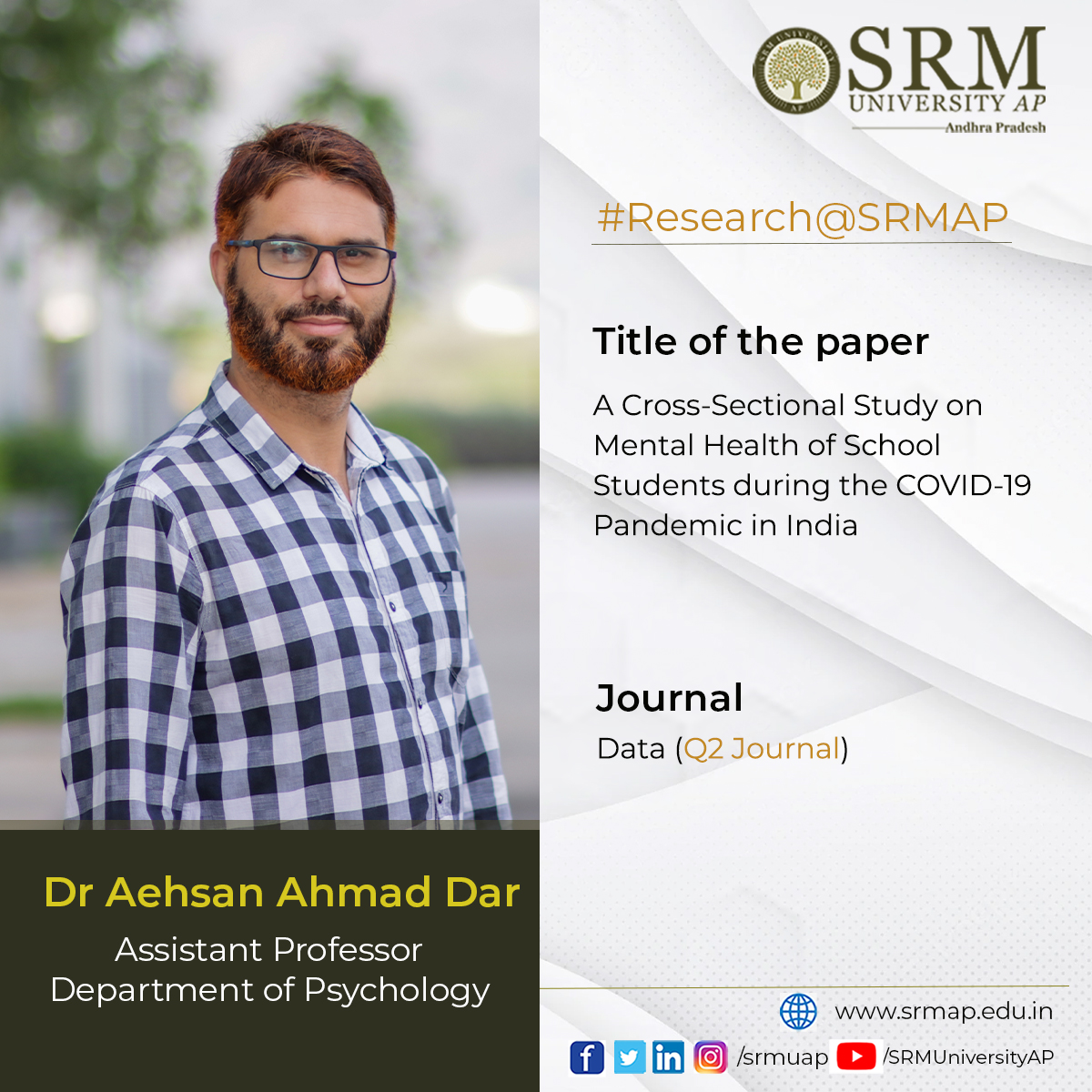
Dr Aehsan Ahmad Dar, Assistant Professor, Department of Psychology, published the article titled “A Cross-Sectional Study on Mental Health of School Students during the COVID-19 Pandemic in India” in the journal Data in collaboration with academicians from different universities across the country and abroad.
The present study estimated the mental health of school students during the COVID-19 pandemic. The findings revealed that the COVID-19 pandemic caused stress which increased the levels of anxiety and depression among the students. However, social support from family and friends was found to be a protective factor for mental health.
The findings of the research will serve as a reliable source of information for mental health professionals and policymakers to better understand the impact of the COVID-19 pandemic and other traumatic experiences on mental health. Therefore, necessary efforts are suggested to provide mental health support services to prevent the development of mental disorders.
Dr Aehsan’s future research plan is to study the mental health of youth and ascertain its risk and protective factors. About 19% of the world’s children live in India, which constitutes 42% of the total Indian population, and nearly half of these children are vulnerable and need care and protection. Due to various traumatic experiences, stress has increased among young people resulting in the development of various physical and mental disorders.
His research will focus on the pathogenic (posttraumatic stress disorder, depression, anxiety, somatization) and salutogenic (posttraumatic growth and resilience) consequences of trauma to help the youth withstand adverse experiences to develop psychological competence. The research will provide insights into the mental health status of youth that would be helpful for the administration, policymakers, and other voluntary organizations to understand effective ways to devise and implement the best intervention programs for maximizing mental health protective factors and minimizing its risk factors.
Continue reading → - Occurrence, environmental risks, and biological remediation of Triclosan September 16, 2022
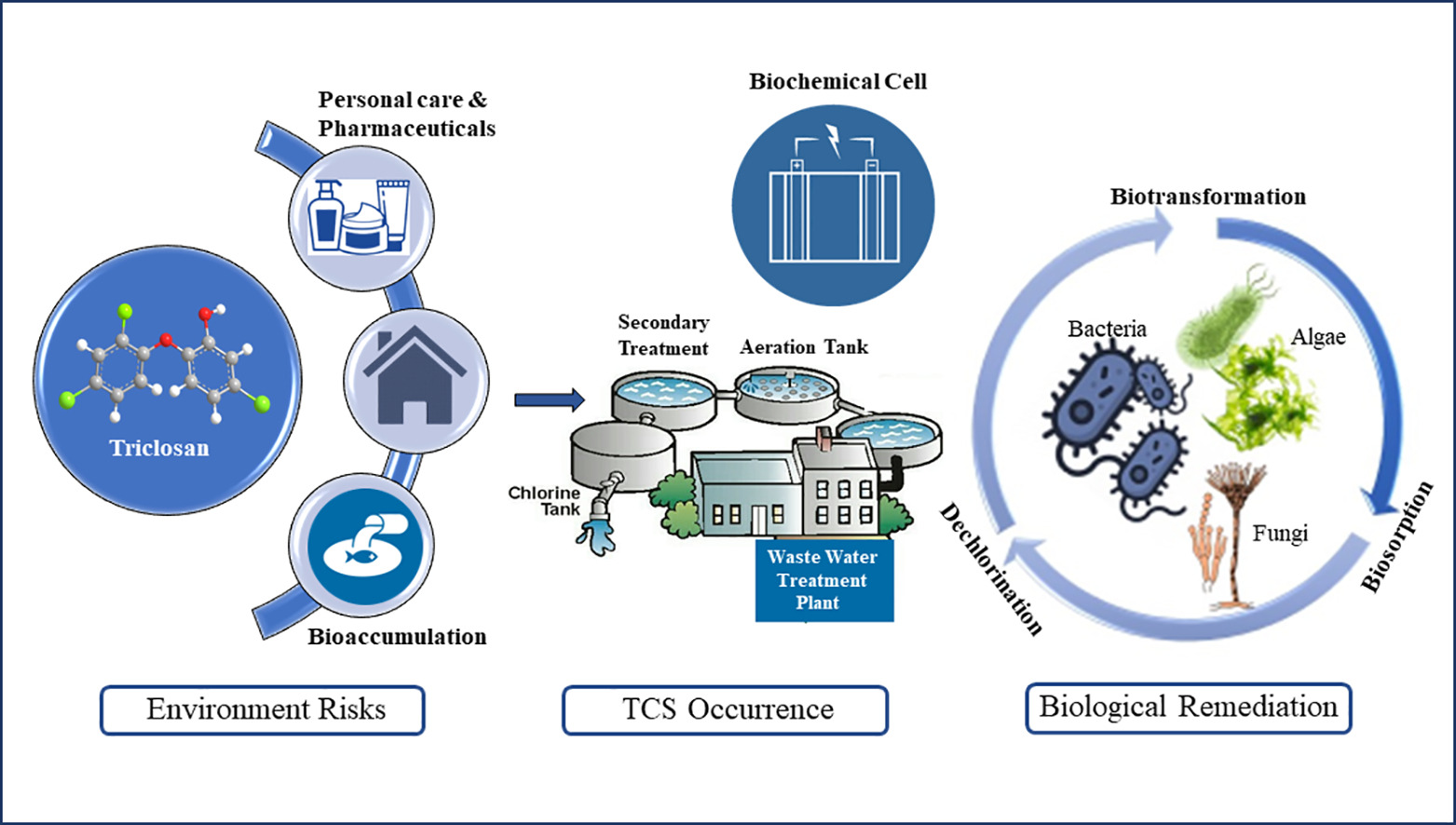
The Department of Environmental Science is glad to announce that Assistant Professor Dr Pankaj Pathak and her PhD Scholar Mr Gopa Nandikesh have published an article titled “Occurrence, environmental risks and biological remediation mechanisms of Triclosan in wastewaters: Challenges and perspectives” in the Journal of Water Process Engineering having an Impact Factor 7.34. The paper was published in collaboration with Dr Lakhveer Singh, Sardar Patel University, Himachal Pradesh.
The paper makes a comprehensive understanding of the disadvantages and consequences associated with the excessive use of Triclosan (TCS), an anti-microbial agent widely used in pharmaceutical and personal care products (PPCPs). The article also suggests various ways to achieve the bioremediation of Triclosan using microbial degraders and the different challenges associated with such practices.
The extensive use of TCS in PPCPs has increased over the past few decades, and its sizeable production and consumption are causing adverse effects on the environment and humans. TCS has been made into the list of emerging micropollutants (EMPs) due to its omnipresence in water resources and even in biological samples such as urine and breast milk. Therefore, it is imperative not only to understand the current status of TCS pollution but their occurrence, exposure routes, and environmental risks to identify remediation technologies for mitigating TCS.
Their research targets to provide cumulative data on the abundance of emerging TCS in water resources and its associated health burdens simultaneously. It is identified that TCS remediation can be achieved through advanced physical and chemical methods such as enzyme oxidation and ozonation. However, there are drawbacks such as high energy consumption and the formation of toxic by-products.
The article endeavours to provide an in-depth understanding of the biological remediation of TCS by microbial degraders as well as its superiority over other remediation techniques. Insights into the various microbial communities such as bacteria, algae, and fungi and their unique bioremediation mechanisms are comprehensively summarised. Moreover, challenges associated with existing bioremediation methods and future perspectives are also discussed in the present work.
Continue reading → - Converting fear into power September 16, 2022
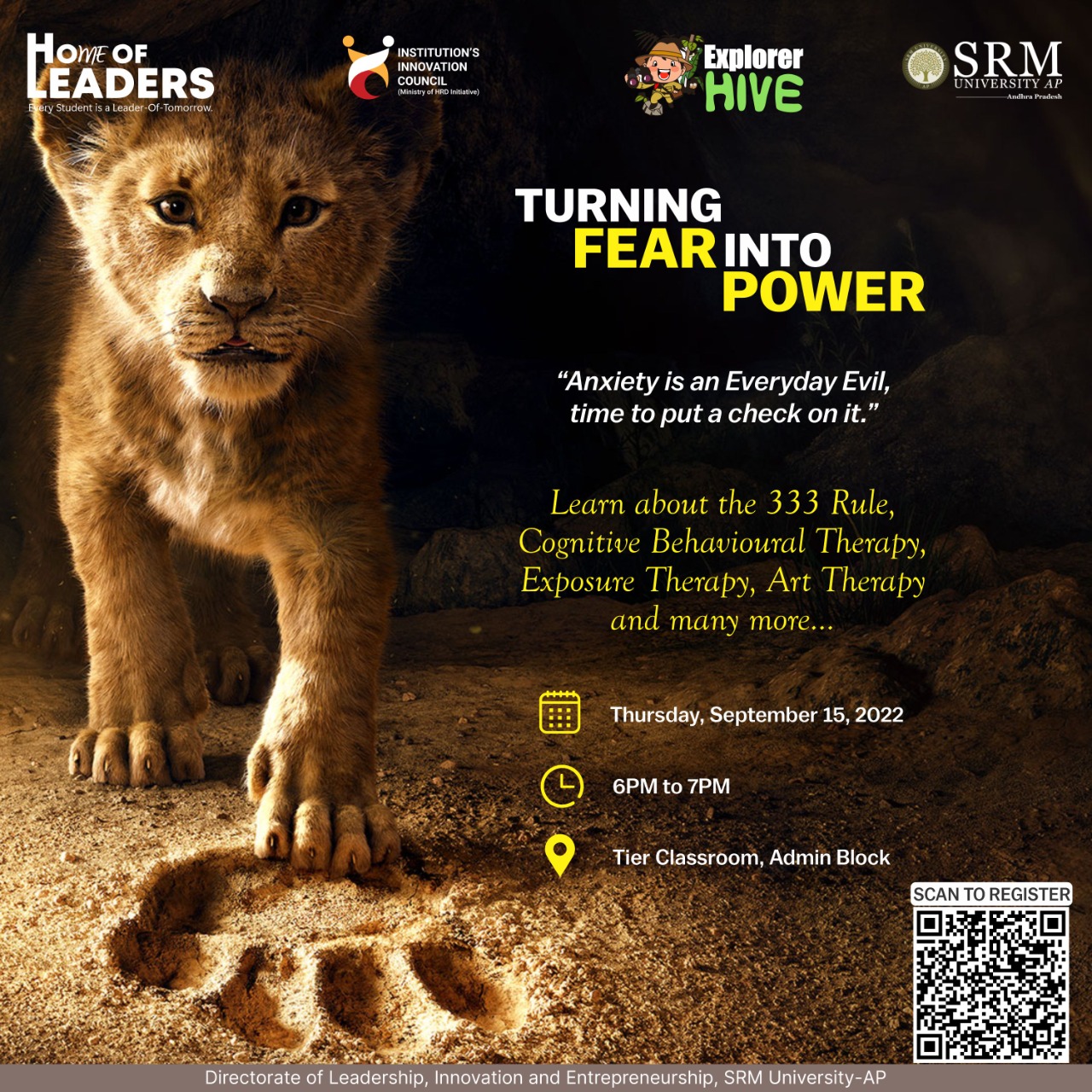 To be a leader, you must act like one and be among leaders, as that is what is demanded by the competitive and dynamic world. The Home of Leaders is a platform designed by students for students to explore beyond the boundaries of the university. It reaches out to corporate and everyday life outside the curriculum.
To be a leader, you must act like one and be among leaders, as that is what is demanded by the competitive and dynamic world. The Home of Leaders is a platform designed by students for students to explore beyond the boundaries of the university. It reaches out to corporate and everyday life outside the curriculum.A fun and knowledge session on Turning fear into power was conducted by Explorer Hive of the Department of Entrepreneurship and Innovation on September 15, 2022, to channel the energy of students into indispensable power. The session was based on the idea to confront anxiety and figuring out the route to a confident self. The session covered topics like the 333 rule, cognitive behavioral therapy, exposure therapy, art therapy, and many more.
Energy flows wherever one’s focus goes. Thus, the concept of the programme was to retain the spotlight on focus-oriented energy utilisation. On a scale of 0 to 10, 0 represents total calmness and 10 represents an utterly disturbed mind. The session featured techniques that can bring anxiety levels from 8 to 3 or even less within a span of 5 to 10 minutes.


Continue reading → - Dr Saleti Sumalatha published two patents in a row September 16, 2022
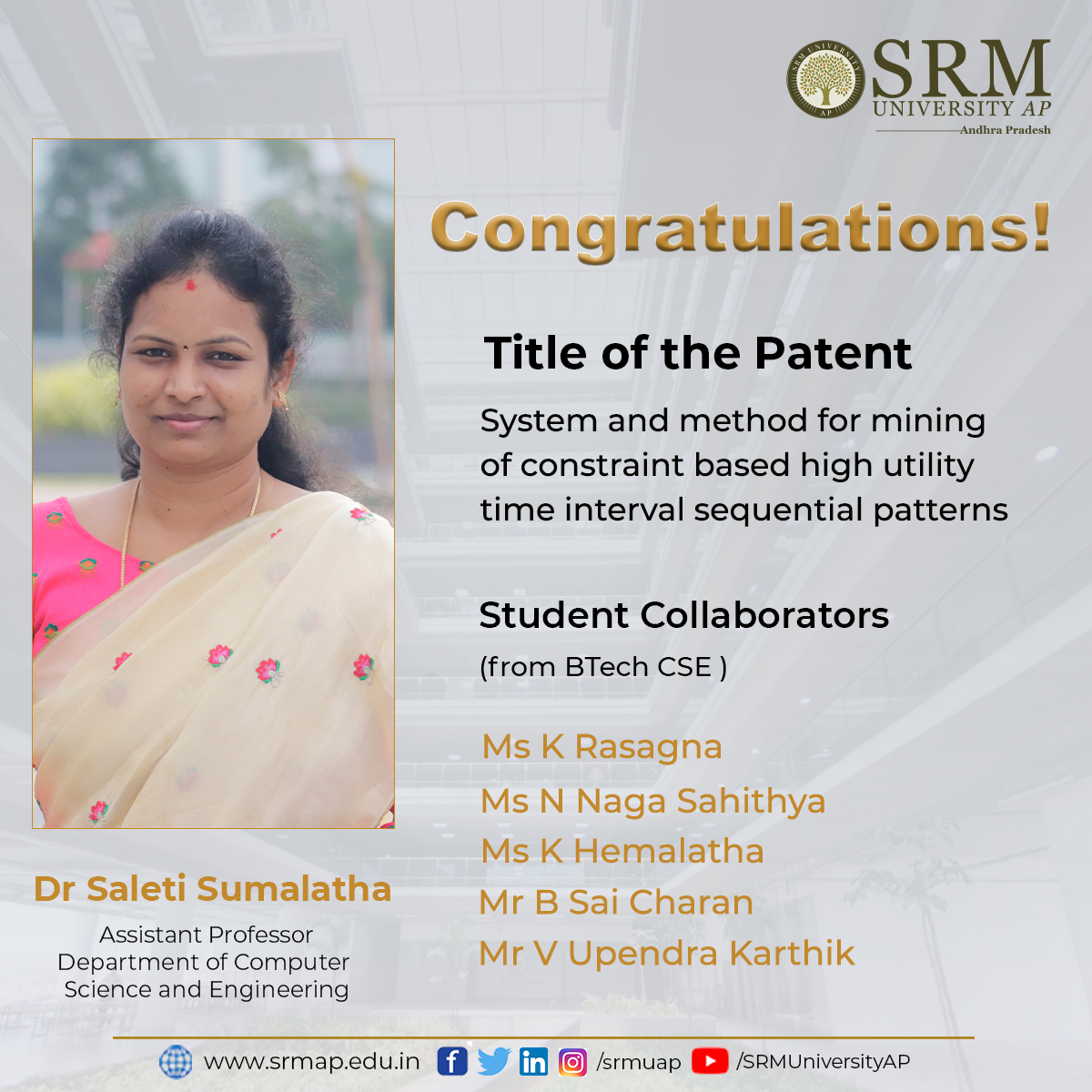
The Department of Computer Science and Engineering is glad to announce that Assistant Professor Dr Saleti Sumalatha and her students got two of their patent applications published in a row. The patent titled “System and method for mining of constraint based high utility time interval sequential patterns” (Application number: 202241044001) was published in collaboration with the BTech students; K Rasagna, N Naga Sahithya, K Hemalatha, B Sai Charan, and Upendra Karthik.
The main intention of the proposed system is to discover the sequences that include the time period between the purchases of each item. For example, if we consider a shop which sells some groceries like Grains, Milk, Yogurt, Bread and Eggs as the set of items in the database. Now, the main aim is to find the time period between the purchases of particular items that are being sold. From this, the shop owner can easily maintain the stock of completed items according to the time period.
For example, an output sequential pattern including time intervals of the form indicates that a customer who purchased item x also bought item y after three months and visited the store again after five months to buy item z. It considers the same utility threshold for each of the items in the database, which shows that each item is assumed to have the same unit profit. This is not convincing as each item is different in real-time applications and should not be treated equally. For example, the sales of” Gold bangles” will produce more profit than the sales of” Cotton Jeans”. In view of this, the research proposes UIPrefixSpan-MMU.
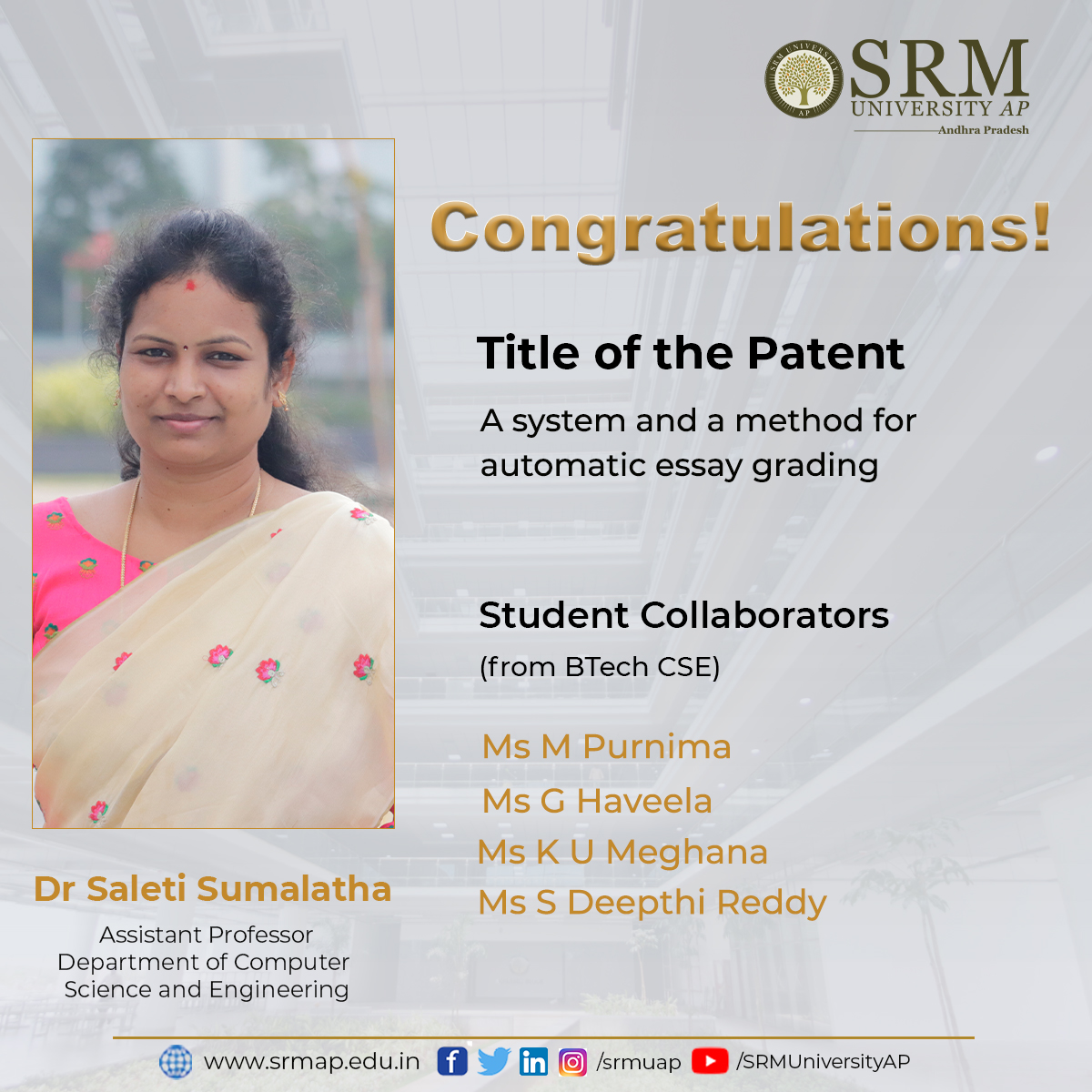
The other patent titled “A system and a method for automatic essay grading” (Application number: 202241043045) was published in collaboration with M Purnima, G Haveela, K U Meghana, and S Deepthi Reddy. Essay grading systems are being adopted by different organisations to reduce the hectic workload from a teacher’s point of view. They made a model which is trained with datasets containing different essay topics and numerous essays with scores varying in a wide range.
Essay grading systems will not only save the time for evaluation but also give accurate results. The output of the system will be quick such that it could evaluate many essays and get trained. This system benefits both the student and the teacher as well. Their model predicts the scores of the essay by comparing them with the features extracted from the trained data. This model can be used to reduce the effort of teachers to grade many essays in a limited time. The work of grading will be fastened and accurate.
Continue reading → - Marketing for Entrepreneurs: Book publication from the Directorate of CR&CS September 14, 2022
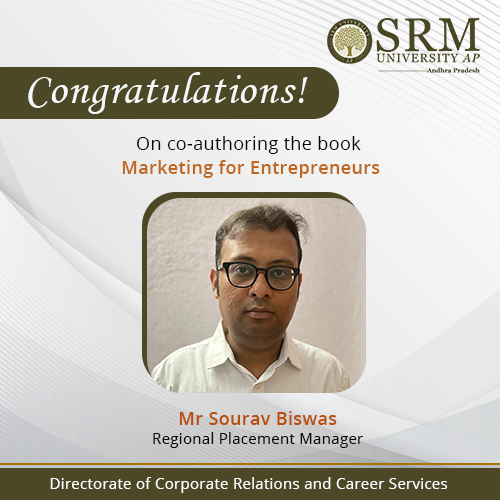 Marketing a product or service is a challenging task in an ever-evolving marketplace. The latest book publication from the Directorate of Corporate Relations and Career Services portrays how marketing and entrepreneurship are not only creative but also cohesive and interesting. Mr Sourav Biswas, Regional Placement Manager of the Directorate of Corporate Relations and Career Services, has co-authored the book Marketing for Entrepreneurs with Dr Punit Kumar Dwivedi, Dr Biswarup Neogi, and Mr Saurabh Bharti. It offers entrepreneurs and intrapreneurs a rich fare of stimulating ideas, a new vision of challenging insight, and the proper marketing and entrepreneurial solutions. It was published by Scientific International Publishing House and launched in August. The book targets an audience with a plan to start innovative ventures in the future.
Marketing a product or service is a challenging task in an ever-evolving marketplace. The latest book publication from the Directorate of Corporate Relations and Career Services portrays how marketing and entrepreneurship are not only creative but also cohesive and interesting. Mr Sourav Biswas, Regional Placement Manager of the Directorate of Corporate Relations and Career Services, has co-authored the book Marketing for Entrepreneurs with Dr Punit Kumar Dwivedi, Dr Biswarup Neogi, and Mr Saurabh Bharti. It offers entrepreneurs and intrapreneurs a rich fare of stimulating ideas, a new vision of challenging insight, and the proper marketing and entrepreneurial solutions. It was published by Scientific International Publishing House and launched in August. The book targets an audience with a plan to start innovative ventures in the future.A brief about the book
Entrepreneurs face most difficulties in two significant areas: selling their products/offerings and finance. Initial stage cash flow is required to develop the product and sustain it. If companies don’t achieve sales, their failure is impending. To bring products or services to the market, entrepreneurs must communicate their offerings to the external environment.
Entrepreneurship and Marketing have traditionally been viewed as two different subjects of study. Increasing awareness of the significance of innovations and entrepreneurship in marketing and the importance of marketing for fruitful entrepreneurial ventures has led to an effort to combine entrepreneurship and marketing as the discipline of entrepreneurial marketing. In the area of entrepreneurial marketing (EM), there seems to be an agreement among researchers and entrepreneurs to undertake marketing in different ways that seem different from the established model of the market.
Mr Sourav Biswas was a member of the IIPC (Industry Institute Partnership Cell) cell as well as a convener of the Innovation council while he started working on the book. He came across many cases where students had started their innovative ideas, which the college funded. But in 90 percent of cases, companies can’t make a profit, or it has been closed within 2-3 years due to a lack of Marketing mix (product, place, price, and promotion). Based on this observation, the authors tried to find a way to help young entrepreneurs to succeed. They envisioned a future where many more entrepreneurs come forward with innovation and proper marketing strategies.
Continue reading → - Effective combinatorial drug therapy for prostate cancer September 13, 2022

Prostate cancer is the second most frequent solid organ malignancy in males worldwide. The risk of causing prostate cancer is increased by age, race, and family history. The U.S. FDA has approved the six most successful drugs, viz., docetaxel, sipuleucel-T, abiraterone, enzalutamide, cabazitaxel, and radium-223. Despite these approved therapies, the disease state remains lethal. The recent publication of Dr Imran Uddin, Post Doctoral Fellow, Department of Physics, “Targeted non-AR mediated smart delivery of abiraterone to the prostate cancer” proposes a combinatorial system against prostate cancer using the FDA-approved drug abiraterone. The paper was published in the Q1journal PLoS ONE having an Impact Factor of 3.75. The research was done in collaboration with Dr Mohd Sajid Khan, Associate Professor, Aligarh Muslim University.
Although abiraterone is an excellent anticancer agent, it causes several side effects and becomes irresponsive after a few months of therapy. They developed a nanomedicine, along with two other components, that will deliver a substantially small dose of abiraterone for treating the same stage of cancer, and the drug will also not be resistant to the cancer cells. The delivery system delivered the drug at a specific site and modified its mode of action. The low dose of abiraterone will also not cause any substantial side effects. The combo was found to be highly biocompatible, nontoxic, and effective.
The proposed nanomedicine with established drug abiraterone, gold nanoparticles, and antibodies against cancer-promoting protein synergistically acted on prostate cancer cells. This synergism potentiated the effect of abiraterone at a very low concentration because other entities also acted via different routes and weakened the cancer cells. The low dose minimized the side effects and maintained patient compliance. This drug was delivered directly to the target, which enabled it to adopt different methods to act on cancer cells. Therefore, the results were promising but further needed to be validated in pre-clinical and clinical studies.
In future, Dr Uddin intends to focus on interdisciplinary sciences. His plans include studying the interface of biology with inorganic nanomaterials, understanding the underlying biological process, and developing new industrially relevant nanomaterials and biomedical aspects. It involves developing nano biosensors for biomolecule detection through the effective integration of the best approaches and expertise in sensor engineering with the vision to take a lead in shaping the future of biomedical monitoring systems. The timely integration of such interdisciplinary approaches will consolidate the application of Lab-on-a-Chip devices for automated biomolecular monitoring.
Abstract of the Research
Prostate cancer is the second-deadliest tumour in men all over the world. Different types of drugs with various delivery systems and pathways were developed, but no one showed prominent results against cancer. Meanwhile, nanotechnology has shown good results against cancer. Therefore, in the given study, citrate mediated synthesized gold nanoparticles (CtGNPs) with immobilized survivin antibodies (SvGNPs) were bioconjugated to the substantially potent drug abiraterone (AbSvGNPs) to develop as a combinatorial therapeutic against prostate cancer. The selected drug abiraterone possesses exceptionally good activity against prostate cancer, but cancer cells develop resistance against this drug and it also poses several severe side effects. Meanwhile, survivin antibodies were used to deliver AbSvGNPs specifically into cancer cells by considering survivin, an anti-apoptotic overexpressed protein in cancer cells, as a marker. The surviving antibodies have also been used to inhibit cancer cells as an immunotherapeutic agent. Similarly, CtGNPs were discovered to inhibit cancer cell proliferation via several transduction pathways. The given bioconjugated nanoparticles (AbSvGNPs) were found to be substantially effective against prostate cancer cells.
Continue reading →

